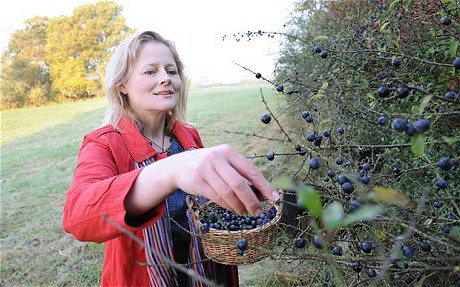
Gathering ingredients for making fruit wine needn’t be expensive or difficult, if you know where to look. For while grocery stores, winemaking specialists and online stockists might offer high quality equipment and ingredients with promises of fast, or cheap delivery, it doesn’t come any cheaper than picking your own fruits from the nearest rural hedgerow, parkland or suburban verge at absolutely no cost at all.
If you want to have a go at foraging for fruits to turn into wine, always make sure you know exactly what you are looking for. Secure the landowner’s permission to remove any fruits and wash and inspect gathered ingredients thoroughly. Avoid areas that might be heavily polluted or might be a popular spot for dogs to relieve themselves and check fruit carefully for hidden maggots and pests before harvesting it.
Once all that’s taken care, of, you’re free to grab a basket and start gathering your free hedgerow fruit! Here are a few suggestions to get started…
Apple
Normally considered a cultivated, garden or orchard fruit, the humble apple can sometimes also be found in the wild; naturalized and flourishing in a hedgerow or woodland. Apples are easy to harvest and enjoy a long fruiting season. Varieties range from sweet apples that you can pick and eat straight from the tree to the slightly tarter cooking apples. Either way, you can confidently use foraged apples to make delicious jellies, liquors and cider. Happy days!
Brambles – or blackberries
Call them what you will, these black knobbly fruits crop up anywhere and everywhere from mid summer to late fall, just begging to be picked and turned into something great. Everyone ahs heard of blackberry and apple crumble, but did you know they can also form the basis of a great fruit wine? Try it and see! Just watch out for those prickles as you pick.
Cherry
These bright, fleshy berries with a hard stone in the centre are ideal for wine making. At their best in late summer, varieties of cherry which are too sour to eat raw or use in jam or desserts can be turned into an excellent wine or fruit liquor. Find cherries growing in pairs on small and medium sized trees in hedgerows and parks – in spring cherry trees often display beautiful white or pink blossom.
Damson
This deep purple, oval fruit with a hard stone in the centre looks like a small plum. Damsons ripen in the summer on small to medium sized trees that, unlike the very similar-looking sloe trees, do not sport thorns. Harvest Damsons in the fall for a beautiful rich fruit that will add depth to any homemade wine. They can also taste great in jellies and baking.
Dandelion
Often considered a garden pest, blighting our otherwise perfectly manicured lawns, dandelion flowers can actually be utilized to make a richly-flavored wine. Not strictly a fruit, this plant with its bright yellow flowers still deserves a place in anyone’s winemaking ingredient inventory. Dandelions are often teamed with burdock to make up a well known homemade wine combination. They are ubiquitous; flowering at their best around May-June time. The flower heads are easily harvested and are in plentiful supply. Dandelion petals and leaves are also surprisingly tasty sprinkled on a salad.
Elder – berries and flowers
The strongly scented creamy-white flowers of the elder plant can be used to make deliciously refreshing wines and non-alcoholic summer cordials. Seen in hedgerows, verges, wood and thickets, the flowers arrive in early summer. They are then replaced later on in the season by tiny, glossy, round black berries that grow on clusters. Raw, elderberries are inedible, but once cooked and strained, they make a wonderfully potent wine, plus they can also be used in jellies.
Rhubarb
Another delight of the fall season, these flavorsome pink stalks can be picked, sliced, boiled and turned into the most exquisite wine with a tangy kick to it. Again, rhubarb plants, with their large, dark green leaves are most often found in people’s gardens as a cultivated fruit, but they can also be spotted, happily thriving in nearby verges and thickets. Rhubarb is another fruit that can be used in all kinds of recipes, from wines and liquors to jellies and desserts.
Rosehip
Not an immediate choice for a fruit wine, perhaps, but these bright orange-red hips growing on thorny, arching shrubs in thickets and hedges in the fall can be cooked up into a lovely wine or jelly that is brimming with Vitamin C. Harvest rosehips carefully, to avoid getting scratched by the thorny branches. The hair around the seeds, although irritating when raw, will not detract from the rose hips’ flavour once they have been cooked and strained.
Sloe
Sloes are small, hard, round purple fruits with a large stone in the middle. They grow on small, thorny shrubs and trees in thickets and hedgerows – so beware of prickles when you are collecting them. Ripe in the fall, sloes are extremely unpalatable raw, but form the basis of an excellent fruit liquor or the well known alcoholic beverage, sloe gin.
Happy hedgerow hunting!
